Sloths: Cute or Disgusting?
There are strong arguments both ways.
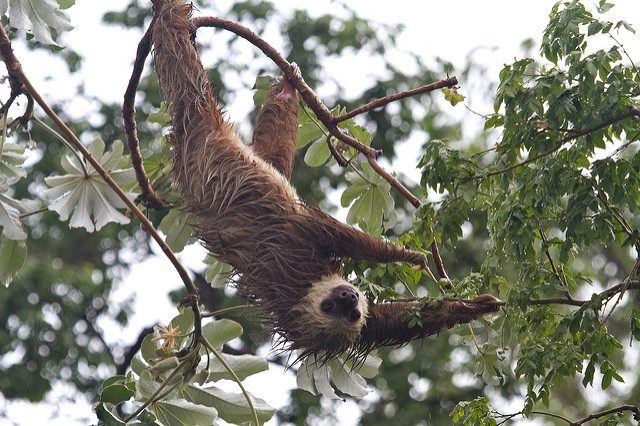
In 1613, the sloth received its English name from a man who’d never seen the animal in the flesh. Samuel Purchas, an English cleric, collected sailors’ reports of sights from their voyages around the world. Though he had not been to the Americas himself, he first described the sloth, which is native to Central and South America, in his book, Pilgrimage. Locals, he reported, called the animal “hay” after the sound it made, and because it moved so slowly, the Portuguese called it “preguiça.” That might translate as “laziness,” but, being a cleric, Purchas translated the word as as “sloth,” one of the seven deadly sins. The name stuck.

From their early encounters with sloths, Europeans did not think much of these creatures. They were described as having human faces, so artists depicted them as a sort of fuzzy bear with an ape-like head. (There are actually two distinct types of sloths, two- and three-toed, which are less closely related than was originally assumed, but since both move slowly, they are lumped together, even today.) As late as the 19th century, one natural history book describes sloths as “imperfect monsters of creation, equally remarkable in their disgusting appearance and helpless condition.”
But in our time, the reputation of sloths has been rehabilitated. This may have reached its zenith with the Great Sloth Meltdown of 2012, when the actress Kristen Bell shared on The Ellen Show the story of just how excited she was to meet a real, live sloth:
Since then, it’s been a popular opinion that sloths are pretty darn cute and amazing. In fact, there’s an entire internet subculture dedicated to “sloth love.”
So which is it? Are sloths imperfect, disgusting monsters? Or are they cute—full stop? Here we present both cases and a chance to resolve this pressing question. After reading the arguments on both sides (and, quick preview, the case for disgusting involves human latrines), please vote in the poll below, which will close at 3 p.m. on Friday, July 14, at the end of Atlas Obscura’s Sin Week.
Sloths Are Cute/Amazing
Baby sloths are unreal adorable.
Okay, it’s cheating a little bit to start with baby animals, because most of them are cute. But sloth babies have the particularly adorable characteristic of spending the first months of their lives clinging to their mother’s bellies. Also, look at this one and its giant tongue!
They love hibiscus.
Just as Michael Pollan advises, sloths eat mostly plants. It’s one of the reasons they are so slow—their diet is low-energy, so their metabolic rate is slow, too. Their digestive systems may take an unusually long time to process food, though there’s some debate about that. One of their favorite foods is reportedly hibiscus flowers, which have also become a popular ingredient in human food culture. Sloths: totally on trend.

They sleep in trees.
Sloths spend most of their time high in trees, and they stay there to sleep, too. To make a comfy tree bed, they like to wrap their legs around a trunk, lean back onto a well-angled branch, and tuck their chins to their chests. This looks incredibly comfortable—the ideal way to sleep in a tree, if you are a sloth and can pull off the balance.
They smell like trees.
Sloths move slowly enough that they don’t need sweat glands, and their body odor is minimal. In the wild, they pick up the smell of their surroundings. Sam Trull, of the Sloth Institute Costa Rica, who has rescued sloths and released them into the forest, told Mental Floss, “they smell really good” when they’re in the forest. “It’s probably just coming from being in the trees and whatever saps that are getting on them from sleeping and moving in the trees versus living in my living room or sleeping in bags. But they smell like trees now.” Gah.
They squawk.
Sloths make an extremely distinct sound that’s been compared to the squawk of a human infant. It’s … well, just watch:
Sloths are disgusting

They are covered in algae.
Sloths are ecosystems unto themselves. They have developed symbiotic relationships with algae and moths. The algae grows all over their bodies, in some cases turning sloths a slime-green hue, and moths live in their fur and lay eggs in their feces. The sloths may even eat some of the algae that grows all over them, or absorb some of its nutrients through their skin. Yes, this is cool, but also it is kind of gross.
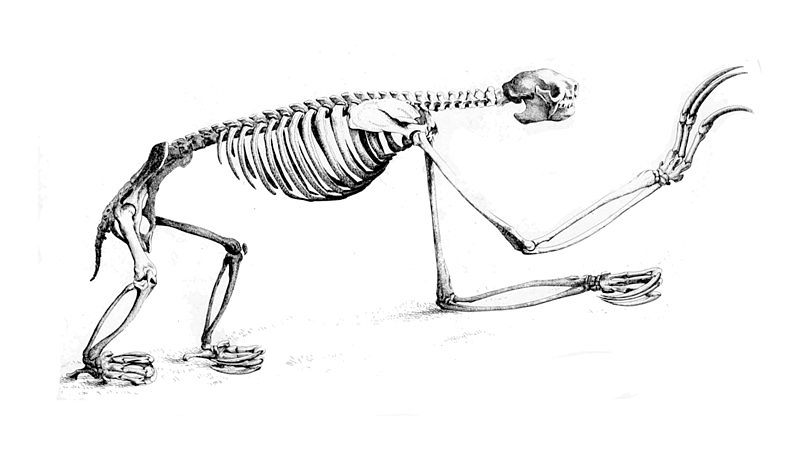
They have extra vertebrae.
Most mammals, no matter how long their necks are, have seven neck vertebrae. (The vertebrae in, say, a giraffe’s neck are much longer than ours, for example.) By contrast, sloths have nine vertebrae in their necks. This enables them to turn their heads almost 360 degrees, like a creepy horror-movie creature. Also, the extra vertebrae can have vestigial ribs sticking out of them.
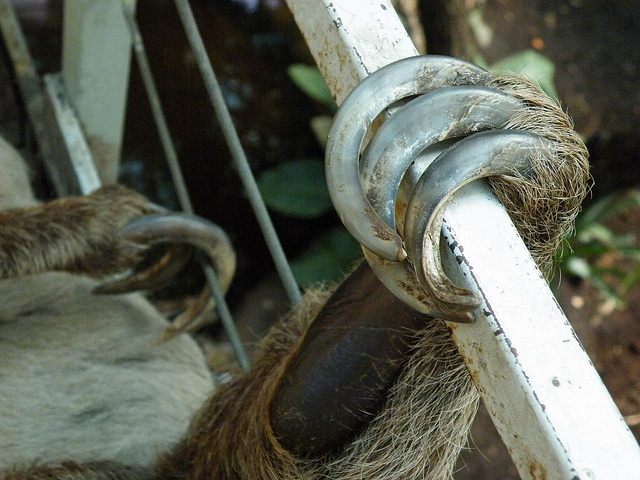
Their claws are very long.
Sloths need claws to grasp and hang from trees, but close up they are long and creepy appendages. They look a bit like human fingernails that were allowed to grow long and were never cleaned.
They do this sex scream.
Sloths are usually antisocial; they spend much of their lives alone. But when it comes time to mate, a female sloth has to let the males of her species know she’s ready. She does this with a loud and unpleasant scream.
The latrine thing
In 2001, a group of scientists working in the Peruvian Amazon noticed a sloth hanging from the wooden beams over their latrine. It wasn’t just hanging there, though. It was eating from the latrine. “It was scooping with one hand from the semi-liquid manure composed of faeces, urine and toilet paper and then eating from the hand,” the scientists later reported.
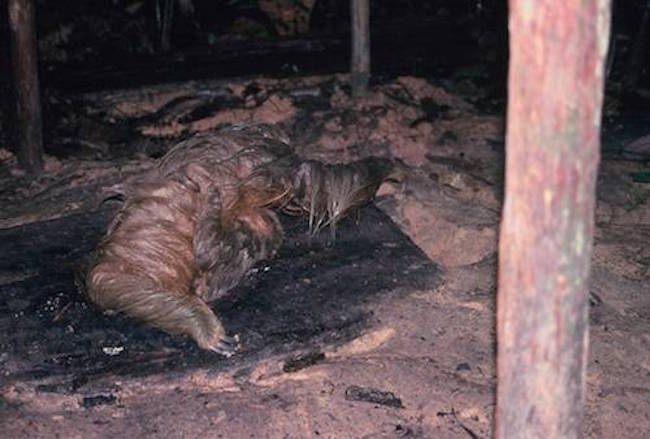
This wasn’t just one weirdo sloth, either. The team observed multiple sloths behaving in this way, on 25 different occasions. Though it must have some nutritional value, there’s no definitive answer as to why the sloths were eating human feces. And remember how baby sloths cling to their mothers? It’s hard to see in this picture, but it shows a mom and baby sloth emerging from the latrine together.
You Decide
To review, the case for sloths being cute: Baby sloths have long tongues, sloths eat hibiscus flowers and other plants, they make incredible squawking noises, they have mastered sleeping in trees, and they smell like the forest. The case for sloths being disgusting—they are covered in algae, they have extra, creepy vertebrae and gross, long claws, they screech to attract a mate, and they are willing to eat liquid-y human waste.
So, what do you think? Sloths—cute or disgusting?


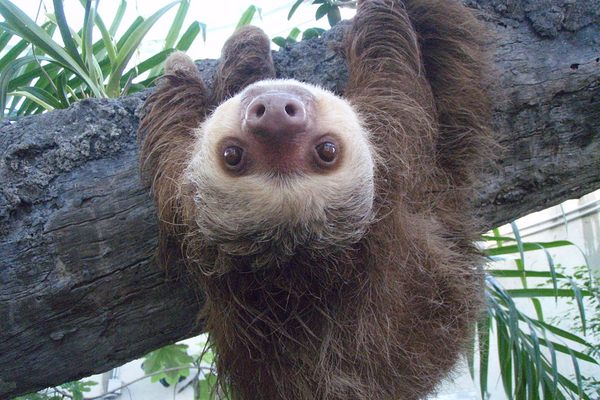


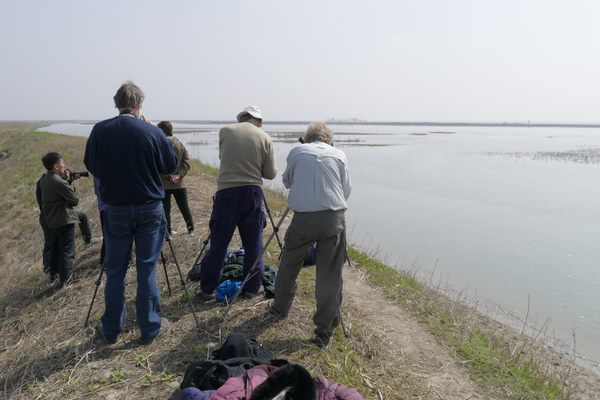










Follow us on Twitter to get the latest on the world's hidden wonders.
Like us on Facebook to get the latest on the world's hidden wonders.
Follow us on Twitter Like us on Facebook